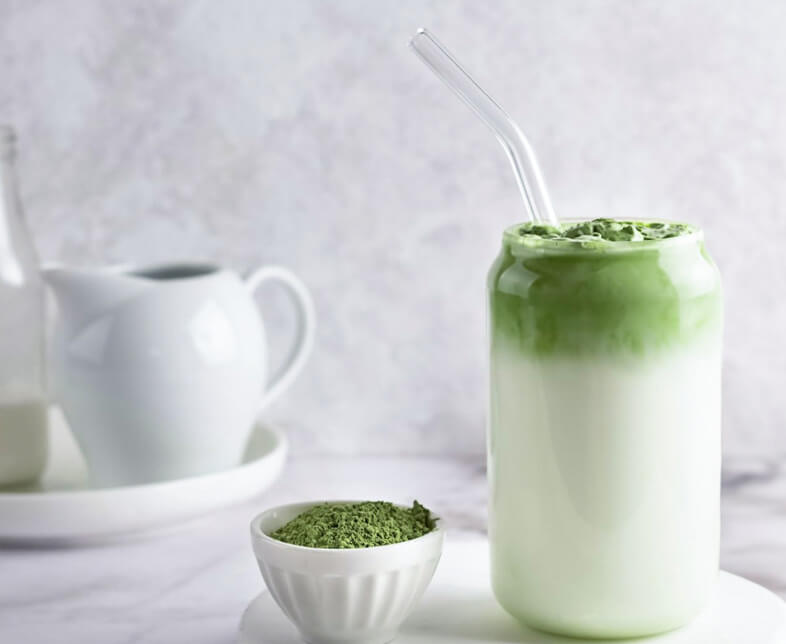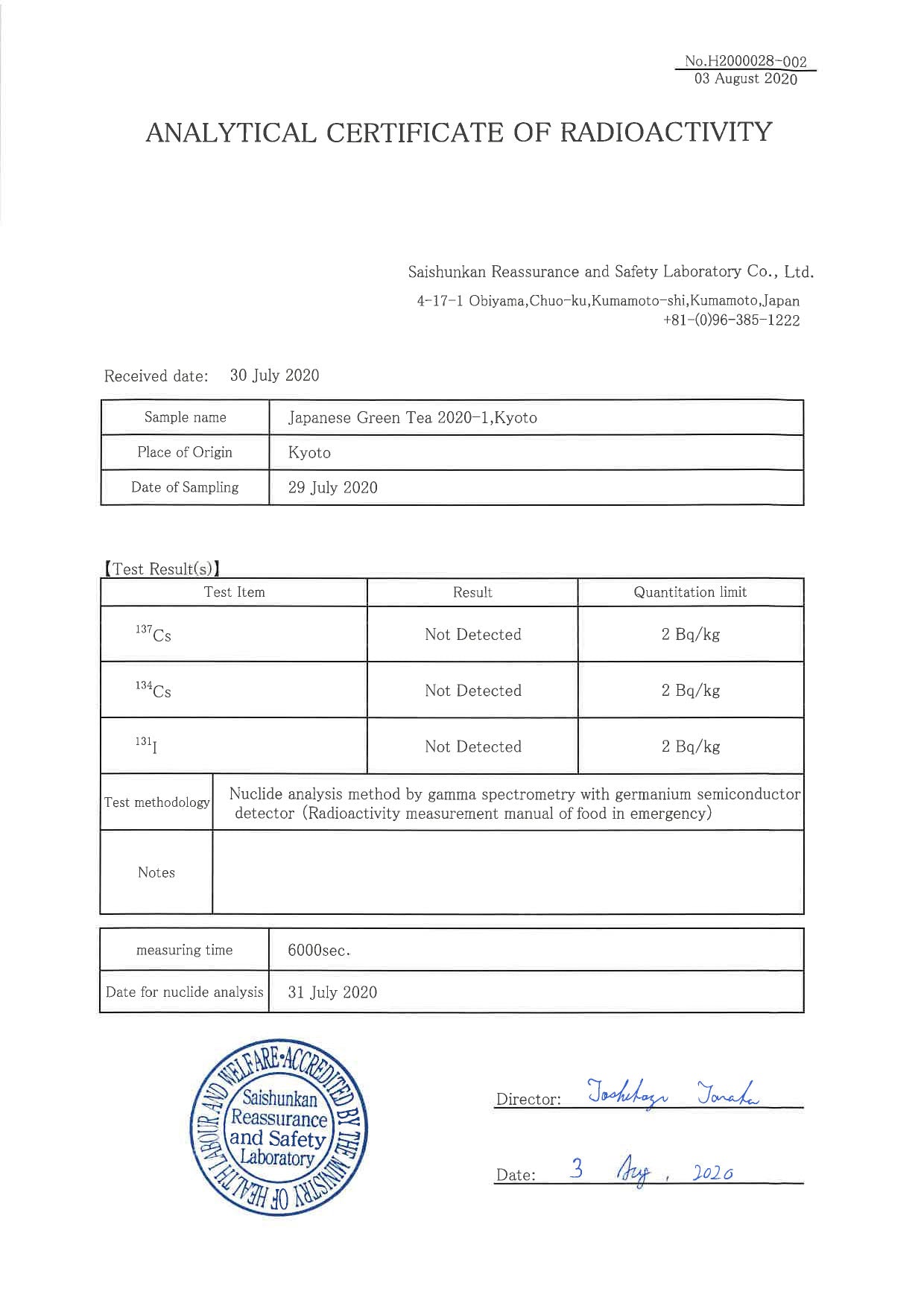

Encha Organic Matcha Product Safety Certificates
Rest assured that quality and safety are the most important criteria for Encha.
Organic: We only offer USDA-certified organic matcha grown in Japan. No pesticide, no synthetic chemical fertilizer, non-GMO. See Encha's annual organic certificate below.
No Radiation: We still conduct annual radioactivity test. Radioactivity is NEVER detected in Encha Organic Matcha. Encha is grown in the Uji mountains in the Kyoto prefecture in central south Japan. Its mountainous area is far from the 2011 Fukushima site.
No lead/heavy metals (at CA Prop 65 limits): We also have tested heavy metals, including lead, for Encha Organic Matcha. None is detected at the most stringent CA Prop 65 limits (lead limit is 0.5 ppm, particle per million). ConsumerLab conducted tests of Encha Organic Matcha as part of their green tea product report in 2016. We are not authorized to post its report. TIME magazine's matcha article cited this ConsumerLab report and mentioned Encha Organic Matcha: "the powders were not contaminated by lead or other metals, and also did not contain pesticides."
FYI, Encha Founder drinks Encha twice a day, in the morning and after lunch.
For any questions, please email us: encha@encha.com



A Simple 4-Step Guide for Selecting REAL, PURE, ORGANIC and HIGH-QUALITY Matcha
I also thought it would be useful to share the 4-step framework I used to sift through all kinds of matcha in my research and tea field journeys before discovering Encha Organic Matcha. You can use it to sift through any brands or products you wanna try.
1. REAL matcha - no fake stuff
Real matcha differs from regular green tea leaves in two aspects.
- The plants were shaded for 3 weeks before harvest, hence growing more theanine which helps increase our mental calmness and focus. It is the natural amino acid accounting for the magic of Zenergy. During shading, the plants also grow more chlorophyl, accounting for the bright green color matcha has.
- The leaves for matcha, called tencha in Japanese, have to be de-stemmed and de-veined, using modern technique of hot air drying and gravity separation. The end result is the soft and savory taste of real matcha.
2. PURE matcha - no additives
When you see a low price tag for matcha that is hard to believe, you have to read its ingredients carefully. They are often pre-mixed with refined sugar, milk solids, rice or, worse, synthetic ingredients. Google the names of popular cafe chains. Their green tea or matcha powder is often pre-mixed with refined white sugar. One day, I asked to try the dry powder itself in the location of that coffee house chain in my neighborhood. OMG, it tasted white sugar.
3. ORGANIC matcha - no pesticide, no synthetic chemical fertilizer, non GMO
Since you ingest 100% of ground-up leaves and there isn't even a way to rinse matcha powder, selecting only organic matcha is important!
4. HIGH-QUALITY matcha
Beyond being real, pure and organic, know the origin, judge the color, taste the product and read reviews.
